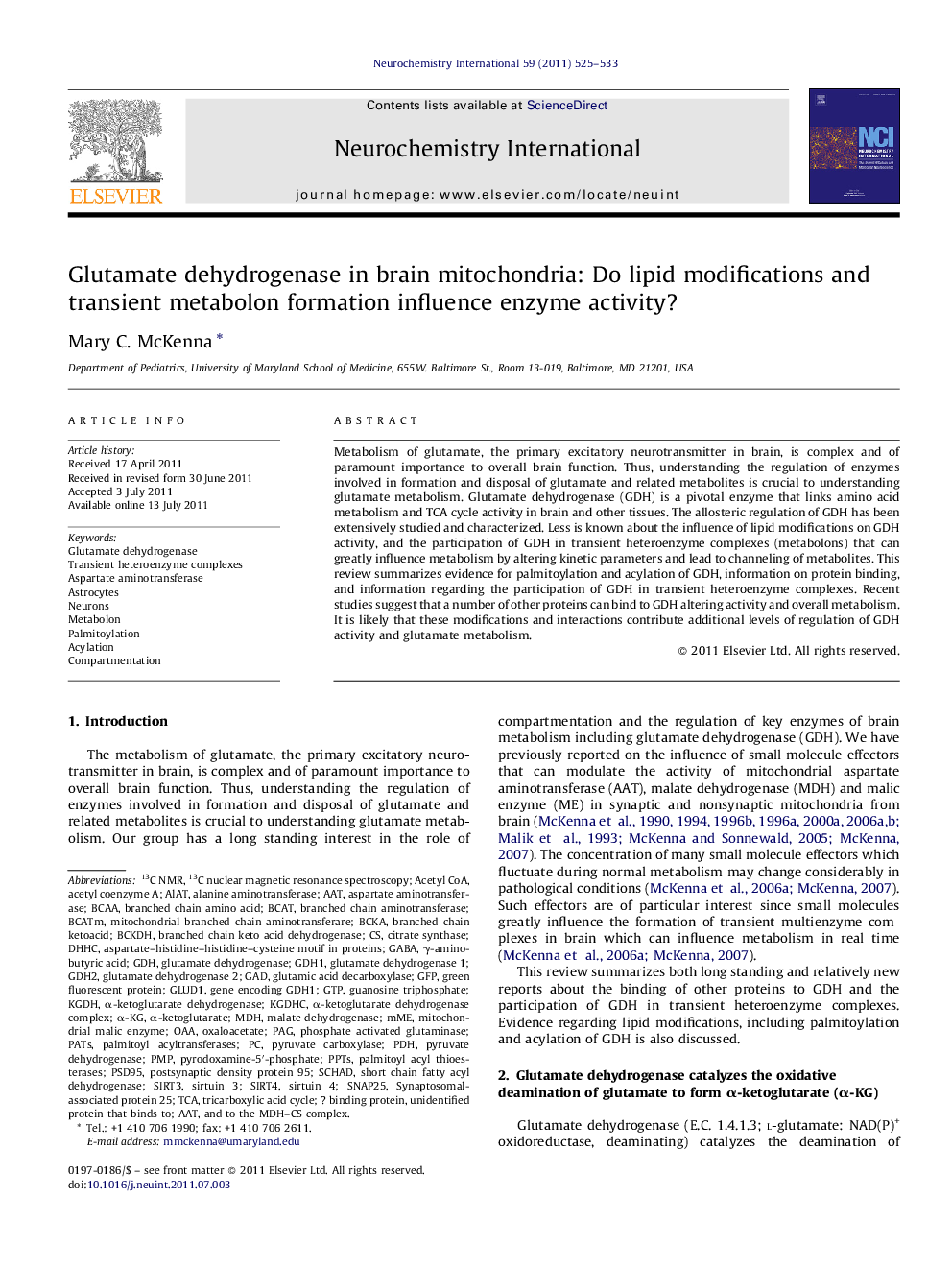| Article ID | Journal | Published Year | Pages | File Type |
|---|---|---|---|---|
| 2200955 | Neurochemistry International | 2011 | 9 Pages |
Metabolism of glutamate, the primary excitatory neurotransmitter in brain, is complex and of paramount importance to overall brain function. Thus, understanding the regulation of enzymes involved in formation and disposal of glutamate and related metabolites is crucial to understanding glutamate metabolism. Glutamate dehydrogenase (GDH) is a pivotal enzyme that links amino acid metabolism and TCA cycle activity in brain and other tissues. The allosteric regulation of GDH has been extensively studied and characterized. Less is known about the influence of lipid modifications on GDH activity, and the participation of GDH in transient heteroenzyme complexes (metabolons) that can greatly influence metabolism by altering kinetic parameters and lead to channeling of metabolites. This review summarizes evidence for palmitoylation and acylation of GDH, information on protein binding, and information regarding the participation of GDH in transient heteroenzyme complexes. Recent studies suggest that a number of other proteins can bind to GDH altering activity and overall metabolism. It is likely that these modifications and interactions contribute additional levels of regulation of GDH activity and glutamate metabolism.
► This manuscript reviews evidence for binding of GDH to other proteins in brain. ► Participation of GDH in transient heteroenzyme complexes can influence metabolism in real time. ► Evidence for lipid modification of GDH by palmitoylation and acylation is reviewed. ► These modifications and interactions may contribute to the regulation of GDH activity and glutamate metabolism.
